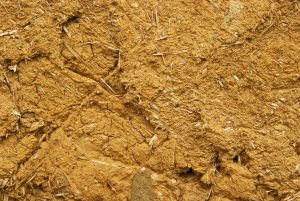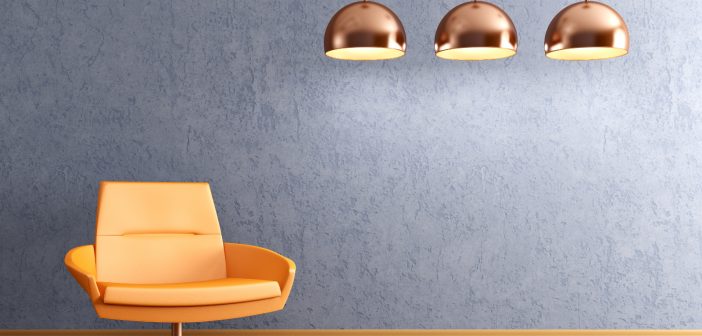Most home interiors these days are constructed with commercially made drywall. The days when plastering was a dignified occupation of skilled workers who passed down their art from master to apprentice have long since passed. Drywall, aside from being rather simple and unattractive, can also be filled with enormous amounts of dangerous chemicals. Natural plasters are a way to create a beautiful home interior that won’t leach chemicals into the air you breathe.

The Lost Art of Plastering
Not too many years ago, most construction crews would have a skilled plasterer as part of their team. Builders would set up the foundation, build the walls, and put on the roof. The plasterer, however, would be in charge of adding that special final touch that would turn the house into a home.
Before the days of 2×4 and plywood timber framing construction, homes might have been built out of adobe, brick, or even stone. While these materials can make beautiful exteriors, they aren’t the idea interior for a bedroom or kitchen. Plastering, was what helped embellish a home interior by covering up the inside walls with a smooth textured material that helped to create warmth, color, and attractiveness to the room.
Additionally, in areas where the climate is unusually harsh, exterior plasters have also been used to protect the walls from driving rains, snow, wind, and other elements.
Different plastering techniques have been used over the course of history. The natural materials that were used for plastering a wall were usually locally sourced and depended on what was locally available.
In certain countries of Central Africa, for example, log and palm frond homes have traditionally been plastered by mixing together local clay with fresh cow dung known as litema. While the idea of living in a home whose walls are made from cow poop might throw up a red flag for some of us, there is a reason for this practice.
The enzymes in fresh cow dung react with the minerals in local clay to help harden the mixture and prevent cracking. As the plaster dries hard, the only smell that is left over is a pleasant, earthy smell that permeates the entire home. Since many ethnic groups in Central Africa raise large herds of cattle, cow dung is always available as is the clay beneath their feet.
In the northern Sahara Desert, cows and clay are hard to come by. In Morocco, local plasterers came up with “tadelakt”, an ancient plastering technique that uses lime and some sort of sandy aggregate. Since sand was in plentiful abundance and lime quarries could be found, this traditional plaster option created beautiful, rock-hard, and water proof plasters from all local materials.
While the art of tadelakt requires much more depth and profundity than what we can offer here, the basic idea is to polish a freshly placed lime putty plaster with hard, smooth rocks. The repetitive polishing with the smooth rocks forces all of the water out of the plaster leaving a smooth, shining surface that is so hard and water-tight that it can even be used in sinks and bathtubs.

The Dangers of Drywall and Commercial Paints
Unfortunately, our modern day world is more focused on efficiency and cost-effectiveness than quality and beauty. Natural plasters such as litema and tadelakt have been replaced by commercially made drywall and latex paints that can be put up and painted in half a day. While drywall might be quicker and cheaper, it is also much less beautiful than natural plasters, doesn’t last as long, and also is a major source of pollution, contamination, and potential health concerns.
Most drywall today is made from gypsum which is encased by paper or cardboard. While gypsum is a natural material, there have been several documented cases of drywall with aggregate material known to be carcinogenic.
Recently, large amounts of Chinese-made drywall were recalled from North American markets because it was discovered it contained phosphogypsum, uranium, and radium, all of which are known carcinogens. Since many materials that go into our homes are made around the world, it is hard to know what exactly goes into the materials, such as drywall, that surround us every day.
Once drywall has covered the 2×4’s and plywood in one’s home, the next step is to take a trip to your local hardware store to purchase latex paints to add some color and spice to your walls.
What few people know however is most commercial latex-based paints have been shown to contain volatile organic compounds, or VOCs. These VOCs are breathed into our bodies while the paint is wet on the walls and are believed to contain several substances harmful to the human body, potentially causing cancer, liver damage, asthma, and other negative health effects.
Even after the paint dries and the smell of fresh paint has disappeared, these VOCs can continue to leach off the wall and into the air in your home creating a long-term health hazard for you and your family.
What Are Natural Plasters?
In recent years, more and more people have been searching for alternative, natural options for their homes. Earthen plasters emerged as a natural, healthy, and non-contaminating option to replace drywall and latex paint.
Natural plasters are simply materials that are taken from the natural world and transformed into a substrate that is then applied over your walls. Natural plasters can be anywhere from 1 inch thick to 4-6 inches thick depending on your wall material. Furthermore, natural plasters can be applied to both internal and exterior walls.
One of the main attractions and benefits of natural plasters is they lend themselves to creativity. Whereas drywall comes in straight boards, natural plasters can be applied to curved walls, can be made into relief sculptures, or can be utilized in pretty much any artistic practice you can think of.
While there are a number of different natural plaster techniques, most natural plasters are divided into two categories: lime-based natural plasters and earthen natural plasters. We offer a simple recipe for each of these “types” of natural plasters below.
How to Make an Earthen Plaster
Earthen plasters use earth or dirt as the main ingredient. Depending on the percentage of clay in your soil, you may also have to add sand to your mix in order to prevent cracking. For most all earthen based plasters, you want to shoot for 80% sandy soil and 20% clay soil.
To find these proportions, an easy technique is to place your soil (or your soil mix with clay and sand) into a clear mason jar. Add water and shake the jar until it is one muddy and cloudy mix.
As the mixture settles, the grains of sand, which are heavier, settle first, and then the clay settles on top of the sand. After an hour or two, you should be able to see clearly defined lines where the sand ends and the clay begins. This simple process of separating the sand and clay present in soil helps you determine whether you need to add more sand or more clay to your mix.
To make your earthen plaster you will need to sift all your ingredients through a fine screen such as a window screen. You can either let the soil you are going to use dry and crush it into a powder, or mix it with a paint mixer until it is the consistency of a runny milkshake and then pass it through the screen in its wet form.
If you are going to be mixing sand and clay, you can sift these ingredients first in a wheelbarrow or on top of a tarp. Once your sand and clay are well-mixed, you need to add some sort of fine fiber material. This could be cattail fluff, or finely sifted horse manure. The small fibers help to hold the plaster together and prevent cracking.
Finally, you need to add glue. One of the easiest “glues” you can add to an earthen plaster is a wheat paste that you can make by boiling water and simple, white flour until it is the consistency of a runny milk shake. Add this glue mixture to your plaster mix until it is wet enough to work (again, you are shooting for a milk shake consistency).
To apply an earthen plaster to a wall, you will have to wet the wall enough to make sure the earthen plaster can stick to the substrate below. You may have to do several coats of plaster, each one with finer materials until you get the look that you like.
You can also experiment with different colors on your natural plasters by adding different colors of clay. Clay can naturally be found in gray, blue, red, orange, brown, black, and even shades of purple.
How to Make a Lime Plaster
Lime plasters are somewhat easier to make than earthen plasters. Since almost every hardware store or agricultural supply store sells bags of hydrated lime all you will need to do is add water to the lime dust to make lime putty. This can be done in five gallon plastic buckets. The longer you let the putty sit, the stronger it becomes.
To make your lime plaster, simply finely sift the sand and mix it in a one-to-one proportion with the lime putty. You may need to add water to make it the same consistency as an earthen plaster.
Lime plasters can be applied to any wet wall substrate. One of the interesting aspects of lime plasters is as they dry from exposure to the surrounding air, the lime reabsorbs carbon dioxide to harden back into a form of limestone. This makes lime plasters carbon neutral and also ensures your walls are effectively caked in limestone.
Natural Plasters for a Healthier and More Beautiful Life
Natural plasters, whether they be earthen or lime based plasters, are a fantastic option to do away with the carcinogenic materials coating the walls in your home. With the earth beneath your feet and a few bags of lime, you can create beautiful interior and exterior plasters that beautify your home and leave you and your family breathing pure, uncontaminated air.
